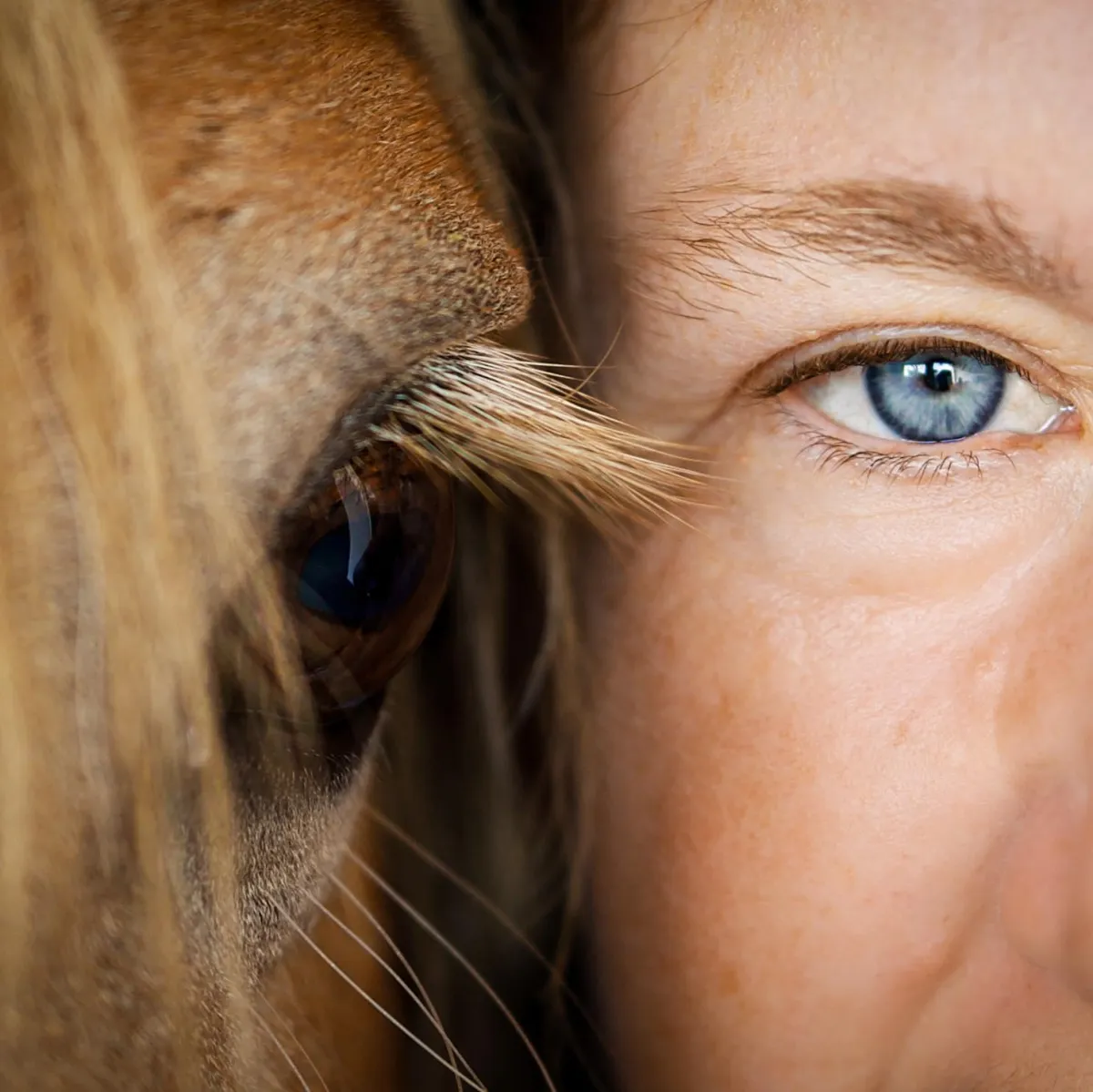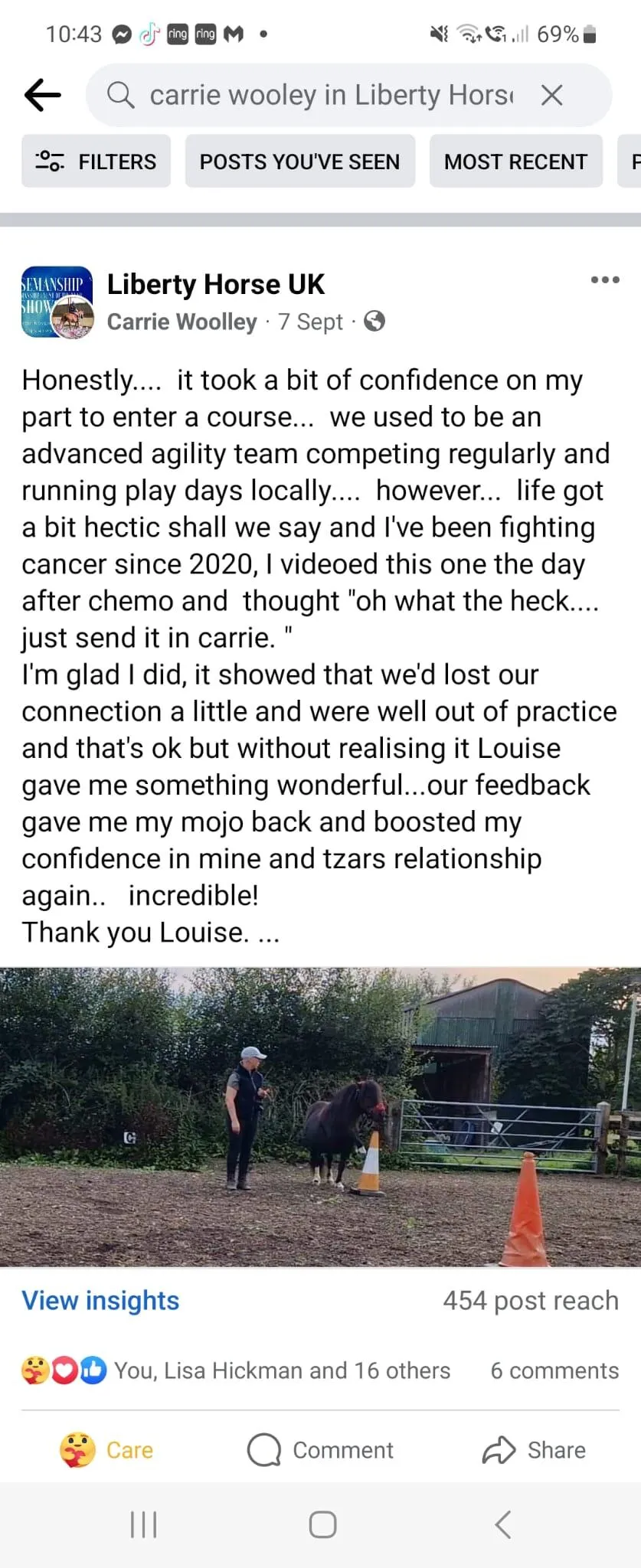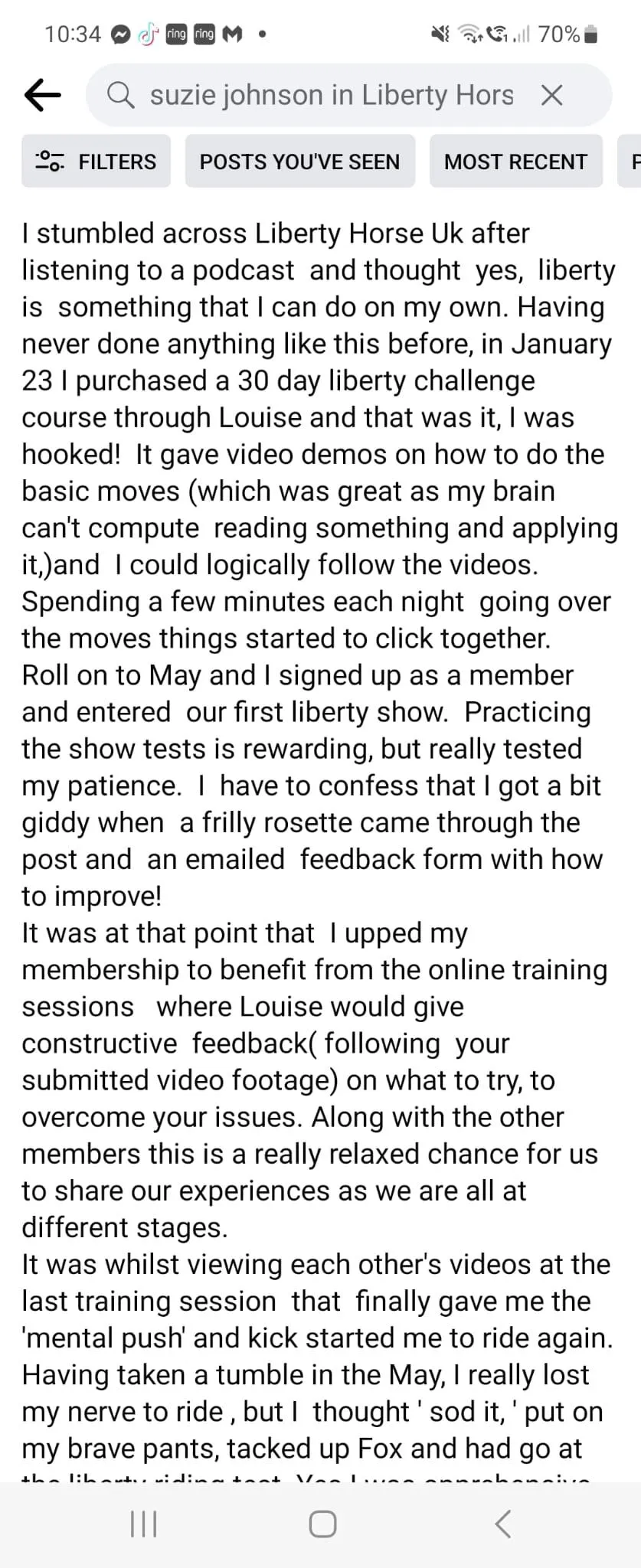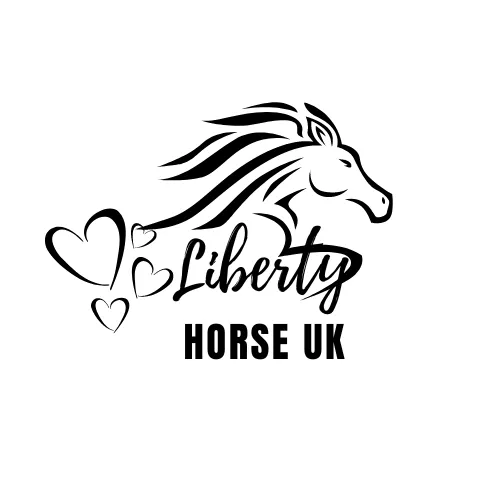It's Never Too Late to Dream Big!
At Liberty Horse UK, we believe it’s never too late to chase your dreams. We’re here to empower you to train your own horse with confidence, compassion, and clarity — no matter where you’re starting from. Our vision is a kinder, more supportive horse world, where horse welfare, ethical training and self-belief go hand in hand, and everyone feels seen, capable, and proud of what they can achieve.

You're Not Alone
Maybe you used to ride with confidence… but now you find yourself standing at the gate, wondering what’s next.
Life has shifted: fear, injury, or simply change. You still love your horse, but training feels overwhelming. Progress feels out of reach. Quietly, you wonder… Is it too late for me?
I’ve been there. I know what it’s like to second-guess everything, to miss the connection you used to have, to scroll past other people’s progress and feel like you’re falling behind. That’s why I built Liberty Horse UK — not just to teach liberty work and tricks, but to create a space where people feel safe to begin again.

Step One
Dream Big
If you're feeling stuck, lost or like you’re just going through the motions. Dreaming big helps you tap back into purpose and possibility. We'll inspire and empower you to chase your dreams.



Step Two
Start Small
We’ll give you the structure, tools, and support to take one small step at a time. The LHUK progress awards provide a framework for your learning and training. You can start off as a complete beginner on the leadrope and work towards movements at liberty.

Step Three
Don't Quit
We keep your momentum going with plenty of ways to stay inspired, connected, and challenged — even when life gets in the way. Our Progress Awards give you a clear pathway and sense of achievement as you and your horse grow together. Trick Titles add a dash of fun and creativity, encouraging you to try new things and celebrate your skills. Online Shows give you the chance to showcase your progress, connect with others, and feel part of something bigger, no matter where you are in the world. And for those ready to dive deep, our Bootcamps offer an intensive, supportive boost to help you break through plateaus and reach the next level.



What You'll Find Inside LHUK
Step-by-Step Training — Follow a proven path from Level 1 to Level 10.
Supportive Community — No judgement, only encouragement.
Group Coaching — Learn from an experienced trainer who’s been where you are now.
Fun Challenges & Shows — Trick titles, online shows, team events, and more.
Kick start your first 90 days!
Download our free journal and planner now!
See What Our Customer Say About Us



Member Spotlight
Suzie Johnson and Fantastic Mr Fox
Lisa Hickman and Autumn
At Liberty Horse UK, we believe progress begins with permission — permission to try, to get it wrong, to laugh, to learn, and to keep going.
We believe in thinking big, starting small, and showing up with our whole hearts — not for perfection, but for connection.
Because you’re not behind. You’re not alone. And your horse’s opinion is the only one that truly matters.

Contact Us
info@libertyhorseuk.com
07977 909283
© Copyright 2023 Liberty Horse UK. Privacy Policy
